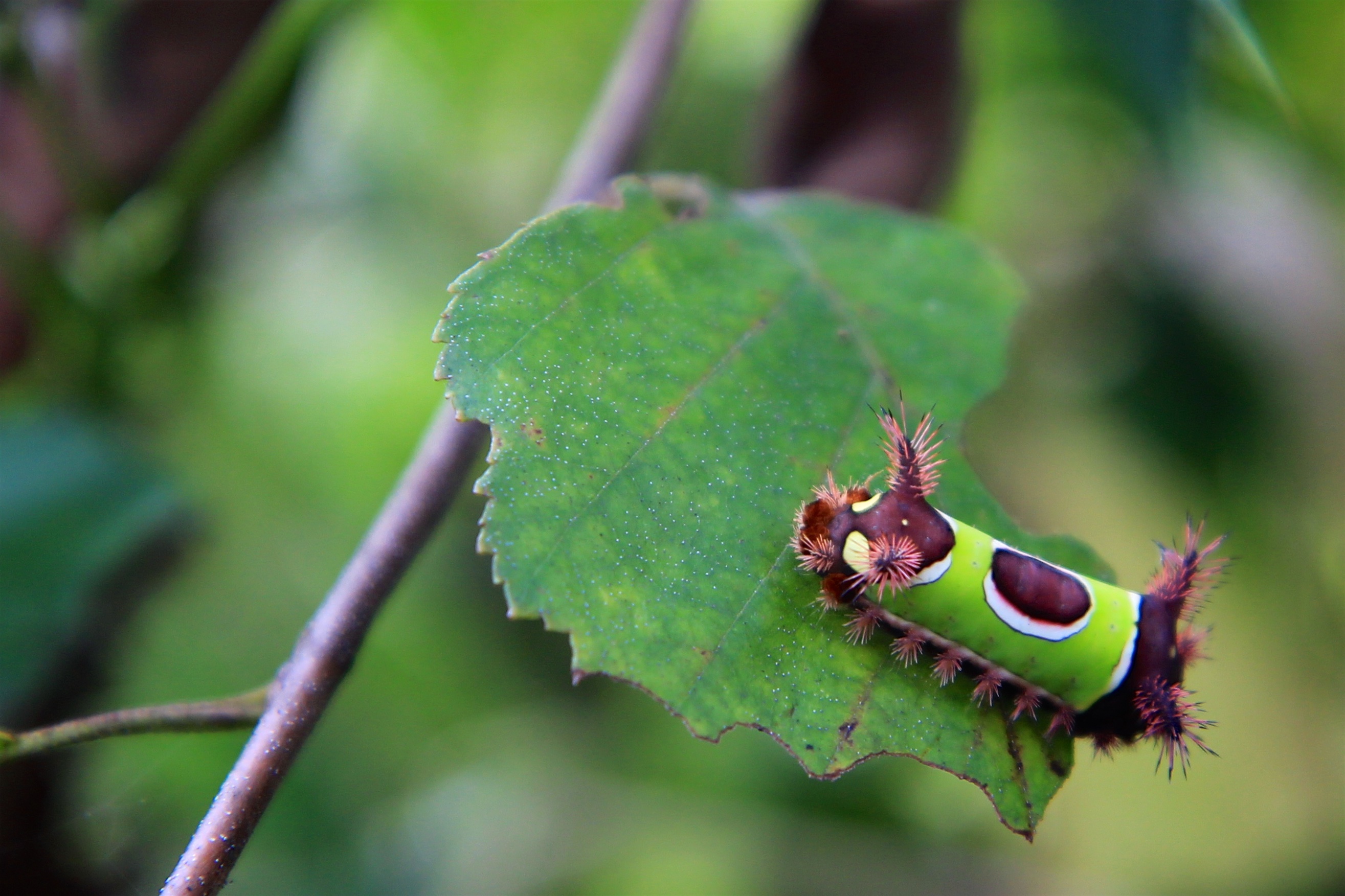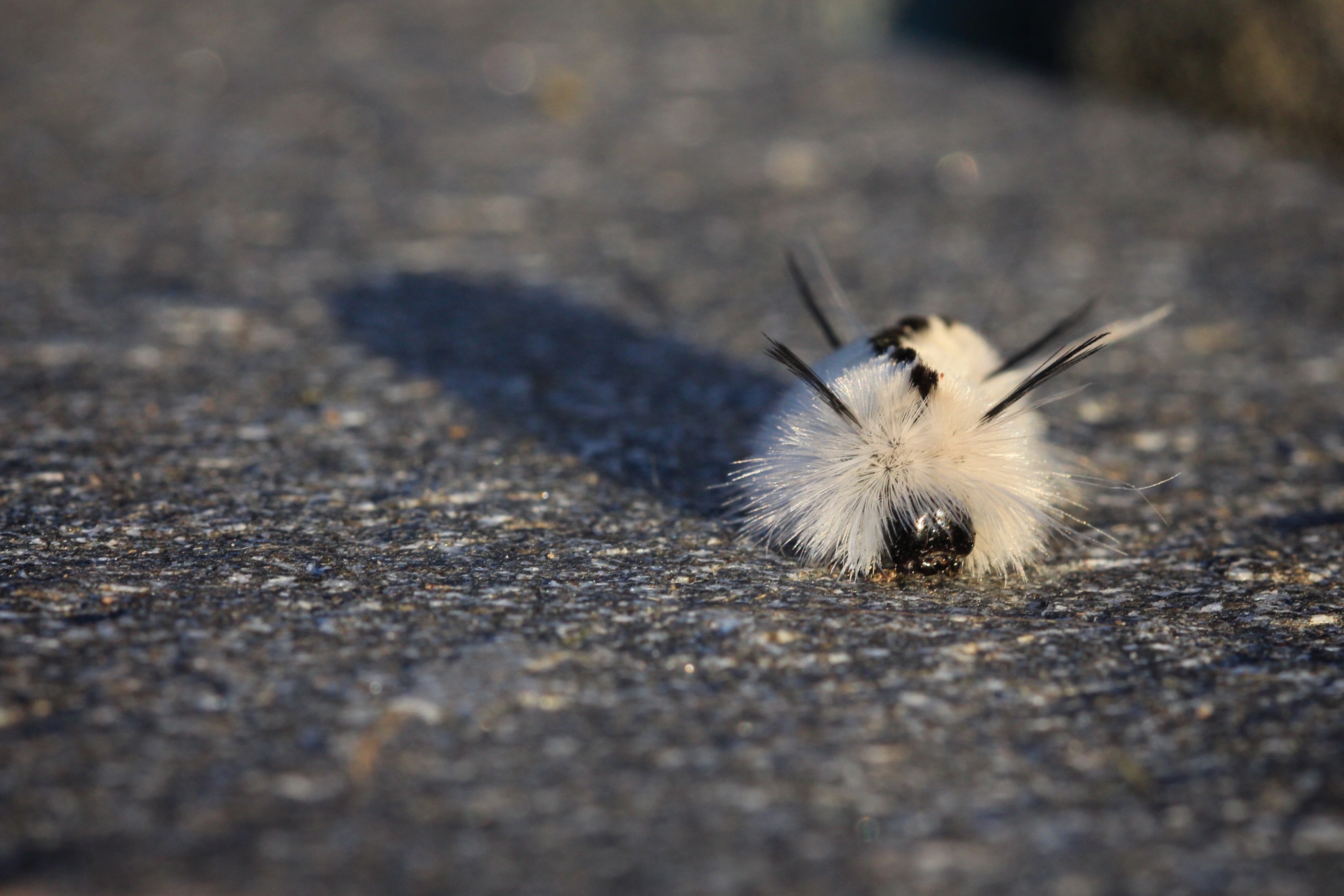Crow’s Nest: A good year for caterpillars
By Daniel Barringer, Preserve Manager.

This has been a particularly good year for caterpillars, it seems. Or perhaps I have seen more because I spend much of my time with a nine-year-old who is into bugs and is always looking down. If it is the former I think it could be because we had consistent rain through most of the growing season resulting in particularly lush growth of their plant hosts. I’ve definitely seen more monarch caterpillars and butterflies (Danaus plexippus) this year than in the recent past. We’ve always had the milkweed host plants, just not consistently had the caterpillars.

This saddleback (Acharia stimulea) was found along our Creek Trail for a couple days, including the day of our wildflower walk. According to David L. Wagner in Caterpillars of Eastern North America, saddlebacks are generalists that feed on a variety of common native and garden species (here I believe it is on river birch, Betula nigra).

If I were to write a country song about this hickory tussock moth (Lophocampa caryae, above), it would be “Even the smallest among us casts a long shadow (when the sun is low)”. We found this in our yard where we have a couple of their preferred food plants nearby—hickory and walnut. Note that both the saddleback and the hickory tussock moth caterpillar have spines and hairs that can cause skin irritation if handled.

This last one was a little difficult for me to identify, and illustrates the benefit of a paper field guide over a vague internet search. In minutes I was able to find this Henry’s marsh moth caterpillar (Simyra henrici) in David L. Wagner’s field guide. This one was also found in our yard, near the cattail and sedge wetland.
